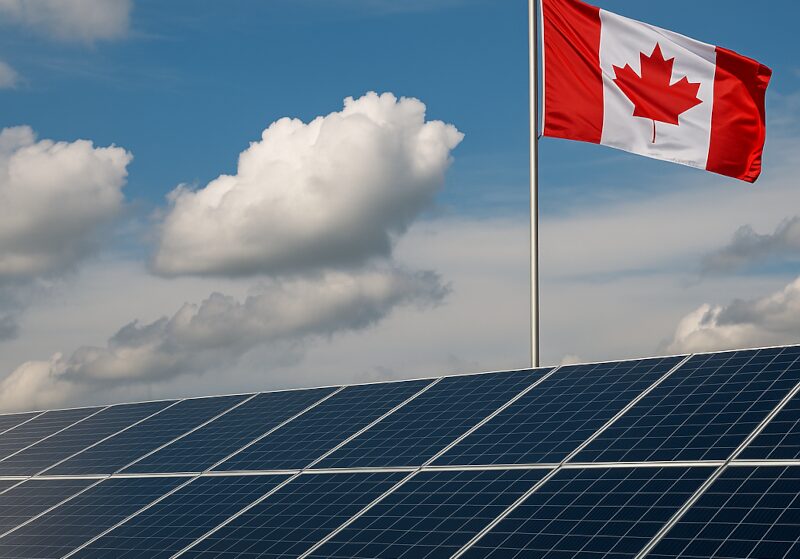A Strategic Capital Shift
In a decisive move that could alter the financing environment for renewable energy across North America, the National Bank of Canada has committed $20 billion toward renewable energy lending by the year 2030.
This initiative marks a significant expansion of the bank’s renewable portfolio, positioning it as one of the most aggressive lenders in the sector relative to its size.
The $20 billion figure includes approximately $10 billion in new renewable lending on top of the bank’s existing exposure.
This is not a symbolic gesture.
The bank has already tripled its renewable energy financing since 2019, growing from around $5 billion to $15 billion.
In 2023, for the first time in its history, the National Bank’s total loan exposure to renewable energy projects surpassed its exposure to non-renewable energy. That is a structural shift, not just a cyclical allocation.
Clear Targets, Not Buzzwords
Unlike larger institutions that often categorize a wide range of loosely related activities under the label of “sustainable finance,” the National Bank has been precise in defining its target. Its focus is on lending directly into utility-scale renewable energy infrastructure, particularly solar and wind projects.
According to the bank’s own disclosures, its target will be executed through direct loans, project finance, and structured underwriting focused exclusively on clean energy.
This new capital commitment also places National Bank ahead of larger competitors, including the Royal Bank of Canada, which currently has a $15 billion renewables commitment.
Considering that National Bank’s total asset base is significantly smaller, the relative scale of its renewable pledge is even more striking.
According to 2024 year-end financials, Royal Bank of Canada had assets exceeding $2 trillion, while National Bank’s total assets stood around $422 billion.
Proportionally, National Bank is allocating more than four times as much of its balance sheet to renewables as the country’s largest bank.
Capital When It’s Needed Most
Importantly, this lending strategy has international implications. National Bank has already demonstrated an appetite for U.S.-based clean energy projects.
In late 2023, the bank co-led a $775 million underwriting for a wind energy and transmission initiative in New Mexico. It also structured a $283 million green loan for a solar facility in New Jersey.
These transactions show a willingness to deploy Canadian capital into cross-border energy development, particularly in regulatory environments where state-level incentives remain intact despite federal headwinds.
This capital influx arrives at a time when renewable developers, especially those in solar, are navigating a more constrained financing environment. Rising interest rates, tightened credit conditions, and political uncertainty in the United States have all contributed to a pullback in risk appetite from many traditional lenders.
According to BloombergNEF, global investment in renewable energy fell slightly in 2023, coming in at approximately $495 billion, down from the record $530 billion in 2022.
In North America specifically, delays in permitting, inflationary pressures on materials, and uncertainty around long-term tax credit structures have slowed the pace of new project development.
For companies involved in the design, development, and deployment of solar projects across North America, access to capital remains a bottleneck.
Solar installations (particularly utility-scale systems) require upfront financing that can range from $20 million for smaller projects to hundreds of millions for larger developments.
These projects are typically structured with long-term power purchase agreements (PPAs) or feed-in tariffs, which stabilize cash flows and make them attractive to lenders.
However, even with contracted revenues, many developers have faced difficulties securing competitive financing over the past two years.
National Bank’s capital allocation has the potential to ease that constraint.
By making targeted loans to proven technologies like photovoltaic solar and onshore wind, the bank is not only facilitating individual projects but also lowering the overall cost of capital across the sector.
With Canadian dollar lending often more conservative and risk-adjusted than in U.S. private markets, the bank’s presence could help stabilize financing terms for clean energy developers operating in both countries.
There is also a broader policy context. Canada’s national target is to reach net-zero emissions by 2050.
The country’s Clean Electricity Regulations, released in draft form in 2023, set aggressive goals for decarbonizing the power grid by 2035.
This means federal support for renewable generation will likely continue to expand, and financial institutions aligned with that policy are better positioned to benefit from regulatory clarity and public-private collaboration.
In the United States, the Inflation Reduction Act of 2022 injected $369 billion into climate and energy spending, but the momentum has been complicated by political volatility.
Clean energy subsidies and tax incentives remain contested in Congress, and several state-level legal challenges are ongoing. Against that backdrop, Canadian lenders with long-term, policy-aligned mandates may offer a more stable financing partner for developers with operations on both sides of the border.
By 2030, if National Bank executes this strategy as outlined, it will have reshaped its balance sheet around clean energy in a way few other North American banks have attempted. The bank has also pledged to reduce the emissions intensity of its power generation financing portfolio by one-third within that same timeframe.
That metric – emissions per dollar financed – is one of the most closely watched by institutional ESG investors and regulators, and it serves as a key performance indicator for energy transition risk.
In summary, the National Bank of Canada’s $20 billion commitment is more than a headline figure.
It represents a strategic realignment toward tangible, utility-scale renewable energy lending.
For solar developers operating in North America, particularly those with cross-border ambitions, this creates a stronger financing pipeline, stabilizes capital availability, and helps de-risk project development at a time when financial and political conditions remain highly fluid.
The capital is moving, and the solar buildout just got a powerful new ally.




